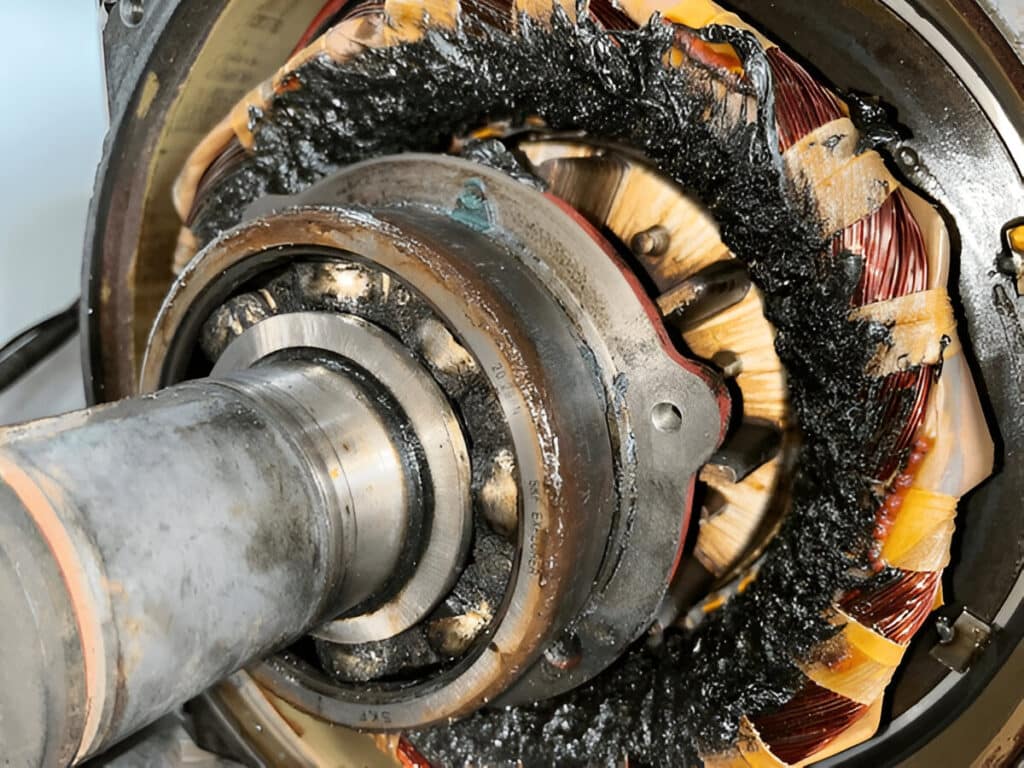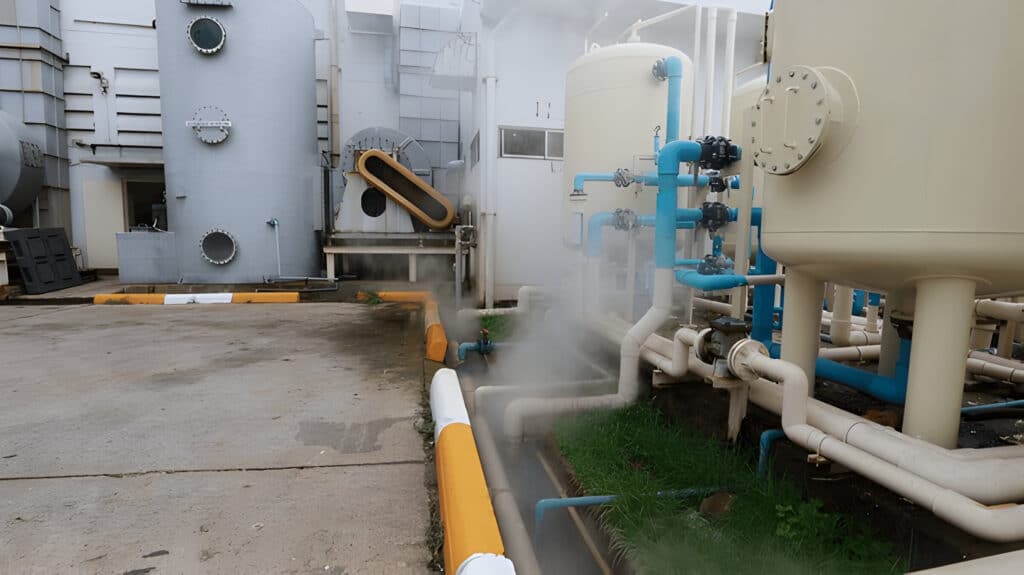
What Is Plan 52
Plan 52 is a popular piping plan for double mechanical seals that uses an unpressurized buffer fluid between the inboard and outboard seals. The buffer fluid is typically a clean, compatible liquid that is maintained at a pressure lower than the seal chamber pressure. This arrangement allows for the detection of inboard seal leakage and provides a barrier between the process fluid and the atmosphere.
How Plan 52 Work
In Plan 52, the buffer fluid is circulated between the seal chamber and an external reservoir. The reservoir is usually equipped with a level switch to monitor the fluid level and detect any leakage from the inboard seal. If the inboard seal fails, the leaking process fluid will cause the buffer fluid level in the reservoir to rise, triggering an alarm or shutdown signal.
The circulation of the buffer fluid in Plan 52 is driven by the pressure differential between the seal chamber and the reservoir. As the inboard seal generates heat during operation, the buffer fluid expands and flows into the reservoir. When the seal chamber pressure decreases, the buffer fluid is drawn back into the seal chamber, creating a continuous circulation loop.
Advantages of Plan 52
- Simple and cost-effective design
- Requires minimal piping and instrumentation
- Suitable for clean, non-polymerizing fluids
- Ideal for applications with low seal chamber pressure
Disadvantages of Plan 52
- Requires a pressurized barrier fluid, which can lead to higher operating costs compared to Plans 53a, 53b, and 54.
- The pressurized barrier fluid may cause excessive wear on the seal faces, reducing seal life.
- In the event of a seal failure, the process fluid can contaminate the barrier fluid system.
What Is Plan 53a
Plan 53a is another widely used piping plan for double mechanical seals. It features a pressurized barrier fluid that is maintained at a pressure higher than the seal chamber pressure. The barrier fluid is typically a clean, compatible liquid that is supplied from an external source, such as a bladder accumulator or a piston accumulator.
How Plan 53a Work
In Plan 53a, the pressurized barrier fluid is circulated between the seal chamber and the accumulator. The accumulator maintains a constant pressure on the barrier fluid, ensuring that it remains at a higher pressure than the process fluid in the seal chamber. This positive pressure differential prevents the process fluid from leaking past the inboard seal and into the barrier fluid system.
The circulation of the barrier fluid in Plan 53a is usually achieved through the use of an internal pumping ring or external pumping device. The pumping action generates flow, which helps to remove heat from the seal faces and extend seal life. The barrier fluid is cooled by an external heat exchanger before returning to the seal chamber, maintaining a stable operating temperature.
Advantages of Plan 53a
- Provides a barrier fluid between the seal faces and the process fluid
- Helps maintain a stable seal environment
- Suitable for high-temperature applications
- Effective in preventing process fluid contamination
Disadvantages of Plan 53a
- The barrier fluid is not pressurized, which may allow process fluid to enter the seal chamber if the inboard seal fails.
- The unpressurized barrier fluid may not provide adequate cooling for high-temperature applications.
- The reservoir must be periodically inspected and refilled to maintain the proper barrier fluid level.
What Is Plan 53b
Plan 53b is a variation of Plan 53a that uses a pressurized barrier gas instead of a liquid barrier fluid. The barrier gas, typically nitrogen, is maintained at a pressure higher than the seal chamber pressure, creating a dry-running environment for the outboard seal.
How Plan 53b Work
In Plan 53b, the pressurized barrier gas is supplied from an external source, such as a plant nitrogen system or a dedicated gas reservoir. The barrier gas flows through the seal chamber and is vented to the atmosphere through a control valve or a flow orifice. The flow of the barrier gas is regulated to maintain a constant positive pressure in the seal chamber, preventing process fluid leakage.
The use of a dry barrier gas in Plan 53b eliminates the need for a circulation system and heat exchanger, as the heat generated by the mechanical seals is dissipated through the continuous flow of the gas. However, the outboard seal in Plan 53b must be designed to operate in a dry-running condition, which may limit the selection of seal materials and face combinations.
Advantages of Plan 53b
- Offers a pressurized barrier fluid for improved seal performance
- Enhances seal face lubrication and cooling
- Ideal for high-pressure applications
- Provides better protection against process fluid ingress
Disadvantages of Plan 53b
- The barrier fluid is not pressurized, which may allow process fluid to enter the seal chamber if the inboard seal fails.
- The bladder accumulator used in Plan 53b can be prone to failure, requiring more frequent maintenance compared to Plans 52 and 54.
- The barrier fluid may become contaminated with process fluid if the inboard seal fails, necessitating a complete fluid replacement.
What Is Plan 54
Plan 54 is a piping plan for double mechanical seals that combines the features of Plan 53a and Plan 53b. It uses a pressurized barrier fluid in the seal chamber and a barrier gas in the containment seal cavity, providing an additional layer of protection against process fluid leakage.
How Plan 54 Work
In Plan 54, the pressurized barrier fluid is circulated between the seal chamber and an external reservoir, similar to Plan 53a. The barrier fluid is maintained at a pressure higher than the seal chamber pressure, preventing process fluid leakage past the inboard seal. The circulation of the barrier fluid is achieved through an internal pumping ring or an external circulation device, and the heat generated by the mechanical seals is removed by an external heat exchanger.
The containment seal cavity in Plan 54 is filled with a barrier gas, typically nitrogen, which is maintained at a pressure higher than the atmospheric pressure but lower than the barrier fluid pressure. The barrier gas acts as a secondary barrier, providing an additional layer of protection in case of a primary seal failure. Any leakage from the inboard seal or the barrier fluid system is contained within the containment seal cavity and vented to a safe location.
Advantages of Plan 54
- Utilizes an external barrier fluid reservoir and circulation system
- Offers superior cooling and lubrication for seal faces
- Suitable for high-heat applications or fluids with poor lubricating properties
- Allows for continuous monitoring and control of barrier fluid conditions
- Provides the highest level of seal reliability and longevity among the plans
Disadvantages of Plan 54
- The external barrier fluid system can be more complex and expensive to install and maintain compared to Plans 52, 53a, and 53b.
- The pressurized barrier fluid may cause excessive wear on the seal faces, reducing seal life.
- In the event of a power failure or system malfunction, the barrier fluid pressure may drop, compromising the double seal arrangement’s integrity.






